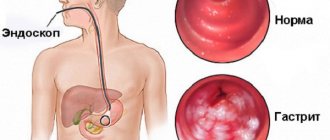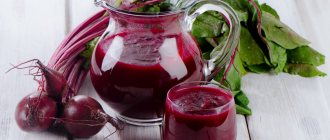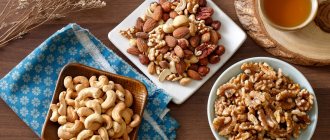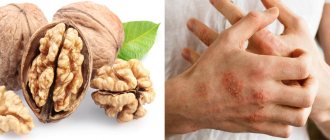- August 9, 2018
- Gastroenterology
- Kira Ifeevskaya
In our century, the pace of life has accelerated greatly. People with an active lifestyle do not have time to rest enough and eat poorly. In the morning they wake up lethargic, there is no desire to eat, at lunch they snack, and in the evening, when hunger sets in, they consume several times more food than the body needs. In addition, a state of constant stress, alcohol and smoking abuse are added. All this provokes disruption of the body's functioning. Leads to inflammation of the gastric mucosa - gastritis.
Principles of nutrition for esophageal erosion
The diet for erosion of the stomach and esophagus, used as a non-drug treatment, corresponds to table No. 1 according to Pevzner. Nutrition for esophageal erosion should comply with the following general rules:
- fractional nutrition;
- breaks between meals no more than 4 hours;
- last meal no less than 3 hours before bedtime;
- preferred methods of cooking - boiling, stewing, steaming, baking;
- food must be chewed thoroughly - at least 20 chewing movements;
- daily calorie intake – 1800-2500 kcal;
- it is advisable to grind food or grind it with a blender;
- all food taken should be warm;
- physical activity is permissible no earlier than 2 hours after eating;
- daily salt intake – up to 12 g;
- Duration of the diet is from 2 months.
Diet No. 2
In the chronic form of gastritis, diet No. 2 is prescribed. This nutritional system provides more variety in food, since the acute period has passed and less can be spared the gastric mucosa. However, moderation is required. You need to steam food. The following possible cooking options are also allowed: stewing and boiling. You can chop food less and puree only tough, fiber-rich foods. Fried food is allowed. But only without breading and fried crust.
Permitted and prohibited products
The diet for esophageal erosion clearly regulates the foods that can and cannot be consumed. List of products allowed and prohibited for consumption:
Nutrition for gastric erosion should be balanced, complete, aimed at reducing the aggressiveness of gastric juice.
Organizing proper nutrition for stomach diseases is the most important part of conservative treatment and is prescribed simultaneously with medications. The diet is selected individually for each patient based on general recommendations and individual preferences. Nutritional features are dictated by the phase of the disease - with a minimum of restrictions during remission and strict selection of dishes during exacerbation.
Beneficial properties of bananas for the human body
- Thanks to the potassium contained in bananas, they help restore the acid-base balance;
- Removes toxins and waste accumulated in the body;
- Thanks to its fiber, the tropical fruit prevents diarrhea and also helps treat it if such a symptom already exists;
- Has an anti-inflammatory effect;
- Restores intestinal microflora;
- Vitamins, minerals and beneficial microelements in the yellow fruit normalize the functioning of the gastrointestinal tract;
- Relieves stress thanks to tryptophan contained in bananas;
Nutrition as part of treatment for erosion
Gastric erosion is an insufficiently studied pathology - the collection of clinical data became available after the development of accessible methods for visual diagnosis of the mucous membranes of the stomach and duodenum.
There are 2 main types of erosion:
- primary, which is defined as an independently occurring process;
- secondary, occurring against the background of the underlying disease as a concomitant disease.
Another type of erosion, which can be classified as a secondary type, is malignant, which develops as a concomitant process to the main oncological disease.
In the acute primary form, erosion lasts up to 14 days, in severe cases it lasts up to 60 days. When the disease becomes chronic, the disease with periodic exacerbations lasts for years, in some cases accompanied by bleeding.
The main complaints of patients with chronic erosion:
- pain in the upper abdomen;
- belching air;
- heartburn;
- weakness, fatigue.
The mechanism of occurrence of the pathology is not fully understood, but the processes that occur in the gastric mucosa are well studied. Observations of patients with erosion have shown that with mild or moderate erosion, a properly formulated diet can normalize the patient’s condition without the use of medications.
The purpose of the diet is to reduce the secretion of gastric juice and its aggressiveness to stop the destructive effect on the gastric mucosa and reduce pain. Treating erosion with nutrition will be a longer process than using medications, but no less effective.

Who should not eat bananas with gastritis?
There are almost no contraindications for taking this fruit for gastritis. The main symptom that requires you to stop eating bananas is flatulence or bloating.
People suffering from diabetes should also limit their consumption of this fruit.
By consuming the fruits wisely, the patient can significantly reduce the consequences of the disease, speed up the healing process and restoration of the inner surface of the stomach, and normalize the process of food digestion.
Nutritional features for some types of erosion
The diet for erosion of the antrum of the stomach does not differ from the diet for general erosion. During an exacerbation, the menu should be more limited and the frequency of meals should be increased to 7, including a herbal decoction before bedtime. In case of bleeding, it is recommended to eat while lying down. To compensate for blood loss, it is advisable to include liver and baked apples in the diet.
Intestinal erosion (including colon) requires a diet similar to that used in the treatment of gastric erosion. Fresh milk and dairy products are excluded from the diet, but the proportion of protein products increases.
How long does it take for a banana to be digested in the stomach?
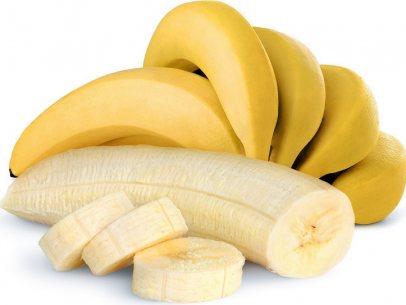
It is recommended to consume any fruits 30-40 minutes before meals. The digestion time of a banana in the stomach is the same (30-40 minutes). After digestion, the banana will enter the intestines within a maximum of 1 hour, where all microelements of the product will be fully absorbed.
If a banana ends up in the stomach, for example, with porridge or meat (which takes 2-3 hours to digest), it will not reach the intestines in the required time, but will linger in the stomach, causing fermentation and the appearance of gases. Therefore, for gastritis, it is important to eat bananas before meals or eat them a couple of hours after a heavy lunch. If you feel that eating bananas causes bloating, increased gas formation, or even stomach pain, then the time between meals and banana dessert should be increased slightly.
Menu for the week
When many people hear the word “diet,” they associate it with healthy, but tasteless food that does not bring satisfaction. For stomach erosion, the permitted list of foods is quite large, and even with limited methods of preparing foods, you can prepare a fairly large number of different dishes from them. The menu for stomach erosion for a week (for a month) is developed including mandatory norms of nutrients and calorie requirements.

On Monday the menu may include:
- slimy oatmeal with a tablespoon of honey, tea;
- glass of jelly, 3 pcs. hard cookies;
- slimy pureed cereal soup, steamed chicken cutlets, dried fruit compote;
- baked apple with cottage cheese;
- vegetable stew of zucchini, potatoes and meat;
- a cup of tea with milk, a cracker.
Menu for Tuesday:
- cottage cheese casserole, chamomile tea;
- baked apple;
- pasta soup, steamed fish croquettes, herbal tea;
- berry soufflé;
- buckwheat porridge with milk;
- banana.
On Wednesday the patient can eat:
- lazy cottage cheese dumplings, tea;
- banana;
- beetroot borscht with zucchini, steamed chicken cutlet, mashed potatoes, milk sauce, broth
- rosehip;
- soft pear;
- zucchini stew with vegetables and meat;
- yogurt and crackers.
On Thursday, the menu can be composed of the following dishes:

- cottage cheese, chamomile tea;
- baked apple;
- tomato soup, vegetable stew, steamed chicken cutlet, dried fruit broth;
- yogurt and dry biscuits;
- mashed potatoes, stewed liver with vegetables, rosehip decoction;
- banana.
List of dishes for Friday:
- 2 eggs in a bag, berry jelly;
- salad of boiled beets with steamed dried apricots or prunes;
- vegetable soup, mashed potatoes, steamed fish cutlet, dried fruit broth;
- yogurt, crackers;
- rice stewed with vegetables, chamomile tea;
- tea with milk, crackers.
On Saturday, a patient with erosion can consume:
- rice casserole with apples, berry jelly;
- tea with crackers;
- pureed buckwheat soup, chicken stew in sour cream sauce, mashed potatoes, compote.
- baked apple with cottage cheese;
- vegetable stew, a piece of bread, rosehip tea;
- banana.
On Sunday the menu may include:
- cottage cheese casserole, chamomile tea;
- yogurt and crackers;
- rice and potato soup, buckwheat porridge with stewed liver, compote;
- rosehip tea, crackers;
- mashed potatoes with meatballs and vegetables, tea;
- baked apple or rosehip decoction.

During remission, the menu can include sandwiches with diet sausage or ham, soft cheese, cottage cheese paste, salt, a spoonful of cream and chopped herbs.
Recommendations for choosing and eating bananas
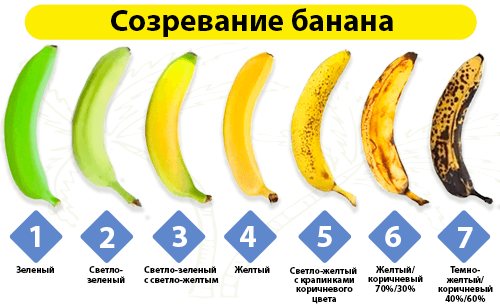
- Eat bananas only when there is no exacerbation of the disease.
- Do not consume liquid until the product is completely absorbed (not earlier than 1 hour).
- It is better to consume it in the form of juice puree.
- Buy medium-sized fruits.
- Green bananas ripen at room temperature for several days.
- The quality of ripe fruit is bright color, not brittle shape, smooth matte skin, dark spots.
- Gray skin may indicate frostbite.
- Before peeling, wash the surface well (you can even use soap).
- It is better to remove the internal threads of the fruit.
With the permission of the attending physician, banana mass can be combined with yogurt, milk, and cottage cheese. Such cocktails create a long-lasting enveloping effect on the walls of the stomach, enriching the body with useful substances.
>
Some cooking recipes
Steam omelette is a tasty and healthy dish that can be varied by adding pieces of vegetables, meat, and fish. To prepare, you need to take 2 large eggs or three small ones, ½ cup of milk, a spoonful of butter, salt to taste. Beat eggs with milk and salt until fluffy foam appears. The mixture is poured into a well-greased mold - ceramic, metal or silicone - no more than 4 cm high. Place the mold in a steam bath or in a double boiler and hold until it hardens. Before serving, drizzle with melted butter.
Mucous oatmeal soup is useful for erosive gastritis - it gently flows around the walls of the stomach, protecting them from the aggression of gastric juice. To prepare, you need to take 3/4 cup of milk, the same amount of water, 3 tablespoons of oatmeal.
The flakes are poured with water and placed on low heat, and boiled until the water evaporates. Pour milk into oatmeal and boil until mucus appears. Remove from heat. Add ¼ teaspoon of salt and sugar to the finished soup, add butter to the plate. Served with toasted bread.
Recipes for dietary dishes that can be offered for stomach erosion, diseases of the duodenum, and large intestine (their treatment requires adherence to a strict diet) can be found on culinary sites, or you can come up with them yourself using the general rules of dietary nutrition. This will allow you to eat varied and tasty.
I studied for a long time, worked hard, and reached heights that many of my peers cannot even dream of. My 43 years of life can be summed up in these few phrases. Side effects included decreased vision, shortness of breath and gastrointestinal disease.
If one and the other could still be tolerated, then the latter, during periods of exacerbation, reminded of itself with severe pain. Diet for stomach erosion became a salvation.
My wife found the menu for the week somewhere on the Internet. In addition, she wrote off all the foods that I should not eat under any circumstances, and which, on the contrary, are healthy. It’s been almost a year now that I hardly remember my nightmares.
Erosive
Erosive differs from the now common gastritis, which occurs in almost every tenth person. It has a long course and requires a longer course of treatment. The main thing is not to forget that diet for erosive gastritis is very important. Erosive gastritis forms 2-3 (maybe a little more) inflamed areas with areas of visible redness. But in some cases, the affected area can occupy the entire inside of the stomach.
With erosive gastritis, a complication may occur in the form of gastric bleeding. The most dangerous are erosive areas located at great depths, near large vessels, as they can provoke increased bleeding.
This type of gastritis can be acute or chronic. Acute occurs if you constantly eat foods that are heavy and harmful to the stomach or take medications that cause inflammation for a long time.
Another stage is chronic. It is expressed by persistent inflammation of the stomach. This leads to disruption of the secretory and motor function of the gastric mucosa. Sometimes violation of the regime leads to a worsening of the condition, and then, in addition to medications, a special diet can help. The doctor will develop it, he will also tell you what to eat for erosive gastritis.
Chronic gastritis also affects people who frequently use a lot of medications that irritate the stomach, such as antibiotics. Also at risk are people working in hazardous industries. And of course, those who often suffer from infectious diseases due to the effects of toxins on the body.
And another form of gastritis, which occurs quite often, is the erosive antral form. It affects the lower third of the stomach, where conditions are ideal for the proliferation of pathogenic bacteria Helicobacter pylori. The toxins they produce irritate the mucous membrane and cause inflammation.
Causes and symptoms of gastric erosion
The overall well-being of a person directly depends on the proper functioning of the digestive organs. So, if you develop any problems with the functioning of the stomach, esophagus or duodenum, you should immediately seek the help of a qualified doctor and begin treatment immediately.
After all, if all this is not done, then you can get more serious illnesses for which simply treatment is no longer enough.
The most common gastrointestinal diseases include erosion of the stomach and duodenum. One of the most important components of the treatment of this pathological condition is adherence to a strict diet.
This disease is characterized by damage to areas of the gastric mucosa. In this case, only the mucous membrane is corroded; the muscle tissue of the organ is not destroyed.
Erosion of the stomach is also called gastritis; Unfortunately, a huge number of people suffer from this disease.
Erosion of the stomach, esophagus or duodenum, as a rule, is of two types: single, in which one to three lesions can be detected, and multiple - more than three lesions, and in different places of the organ.
If treatment is not started in a timely manner, this can lead to stomach ulcers, duodenal tumors, damage to the esophagus and other organs.
This disease can be triggered by:
- eating food that has a detrimental effect on the organs of the digestive tract: these can be spicy, salty, hot dishes;
- damage to the mucous membrane of the stomach, esophagus or duodenum by infectious bacteria, in particular Helicobacter pylori;
- very often erosion is provoked by medications that destroy the mucous membrane of the gastrointestinal tract;
- Stress and depression can also lead to this problem;
- liver failure, chronic pancreatitis and other gastrointestinal diseases;
- liver dysfunction, in particular cirrhosis;
- diabetes;
- malignant diseases of the stomach, esophagus and duodenum;
- regular ingestion of toxic volatile substances into the body.
If treatment for erosion is started in time, the disease will go away within two weeks, and the chronic form of this disease usually lasts for years. According to symptoms, experts distinguish between two types of erosion: ulcer-like and hemorrhagic.
The ulcer-like form is characterized by severe pain in the stomach. Research shows that pain most often occurs after eating, although occasionally it occurs on an empty stomach.
In addition, people with this form of the disease complain of belching, vomiting and heartburn. The hemorrhagic form in most cases is characterized by bleeding in the diseased organ, which, in turn, leads to anemia. Often the disease passes without visible symptoms.
Erosive gastritis. Treatment and diet
Dietary nutrition for such a disease depends on what form the patient suffers from.
Thus, for acute erosive gastritis, dietary table No. 1 is prescribed. This special diet limits the consumption of foods that can stimulate secretion, as well as foods that irritate the gastric mucosa.
The amount of food consumed per day must be divided into several meals. The most correct thing would be to divide it into 6 meals, i.e. approximately eat every 2 hours.
Food for erosive gastritis must be prepared by stewing or boiling. Steaming is also acceptable. Some doctors allow baking, but a hard crust should be avoided.
During exacerbation of erosive gastritis, the diet must be strictly followed in order to reduce foci of inflammation, speed up healing, and normalize the functioning of the stomach.
Don't forget about liquid! It must be consumed in the amount of 1.5 liters per day. But this includes drinks and soups.
Diet for gastric erosion: menu for the week, general recommendations
Diagnosis involves taking a biopsy and endoscopic examination. After confirming the diagnosis, the doctor prescribes treatment: antibiotics, protectors, immunomodulators, blockers. Nutrition for gastric erosion is no less important. The diet for erosive esophagitis is similar. So, diet for gastric erosion, general recommendations:
- Don’t be lazy to check the temperature of the finished dish (very cold and hot food is contraindicated for a sick stomach).
- During the period of exacerbation or if erosion appears for the first time, the basis of the diet should be slimy soups and pureed porridges.
- Stick to fractional meals: 5-6 times a day and in modest portions.
- The ideal cooking method is in a steamer or oven, or boiled.
- Try to chew your food thoroughly (at least 20 times). Food undergoes primary processing with saliva: enzymes contained in saliva begin to break down food before it enters the stomach.
- Avoid snacks and dry lunches. This is also good for your figure: nutritionists have calculated that at the dinner table a person eats 2 times less than on the go.
- Try to keep your diet nutritious and complete: for women it is important to consume at least 1800 calories, for men - 2500.
- The amount of nutrients is distributed as follows: 55% proteins, 15% fats, 30% carbohydrates. It is advisable to consume carbohydrates in the first half of the day, as these are the main sources of energy. Eat less fatty foods, because fat inhibits the processes of absorption and breakdown.
Indicative menu for the week:
- It is recommended to abstain from food and drink weak broth and jelly every 2 hours
- For breakfast: milk oatmeal porridge (200g). For lunch: noodle soup (200g), steamed meatballs (100g). For afternoon snack: rosehip broth, yesterday's bun. For dinner: mashed potatoes (150g), chicken cutlet (100g)
- For breakfast: non-acidic cottage cheese (150g), fruit juice (120g). For lunch: rice milk soup (200g), casserole with pumpkin (100g). For an afternoon snack: fruit jelly (180g). For dinner: boiled fish with milk sauce (120g), buckwheat porridge (140g)
- For breakfast: steamed omelet of 2 eggs. For lunch: vegetable puree soup (200g), meatballs (120g). For afternoon snack: cottage cheese casserole (120g). For dinner: carrot puree (100g), boiled chicken (150g)
- For breakfast: rice porridge with milk (200g), 1 soft-boiled egg. For lunch: soup with meatballs (200g), rice with vegetables (120g). For afternoon snack: baked apples (140g) For dinner: cottage cheese soufflé (140g), fruit mousse (100g)
- For breakfast: oatmeal with banana (180g). For lunch: buckwheat soup (200g), baked veal (120g). For afternoon snack: compote with biscuits. For dinner: mashed potatoes (180g), boiled fish (100g)
- For breakfast: 2 soft-boiled eggs, 1 banana. For lunch: fish soup (200g), fish cutlet (100g). For an afternoon snack: a glass of milk, a slice of bread (80g). For dinner: vegetable puree (140g), chicken cutlet (100g)
Diet for esophageal erosion necessarily includes vegetable dishes. For example, pumpkin can be used to make not only porridges and casseroles, but also delicious desserts.
Erosive antral gastritis. Diet
In the first days, it is necessary to cleanse the body, so you need to fast for 1-2 days. At this time, you can have weak black tea or mineral water. Then you need to eat food often, but in small portions, boiled and pureed. For example, various cereals, vegetable purees, chopped meat. The ban applies to foods that are difficult to digest and linger for a long time. Take food warm.
It is necessary to take antibiotics with food.
Do not forget about traditional medicine. Among these recipes one can highlight, for example, potato juice (freshly squeezed), cabbage juice, tinctures of burdock and plantain roots and much more.
Healthy and tasty recipes
- Oatmeal soup with milk, pureed. For half a glass of milk, take 2 glasses of water and 2 tablespoons of oatmeal, a quarter of an egg, one fifth of a teaspoon of sugar, and butter for dressing. Boil the flakes in water until tender, then pour in hot milk, add sugar and a pinch of salt. Season with egg-milk mixture and butter.
- Steam omelette. Beat 2 eggs with half a glass of milk, pour into a pre-greased mold and steam. Drizzle with melted butter before serving.
- Meat soufflé. Boil 100 grams of meat and pass through a fine grinder twice. The minced meat is salted and seasoned with a spoon of vegetable oil. Prepare a sauce from 2 tablespoons of milk and a quarter teaspoon of flour. Pour the sauce into the minced meat and add the yolk to it. Lastly, add the separately beaten egg whites. Mix thoroughly and steam in a pre-greased form.
- Semolina porridge with milk and egg. Boil half a glass of water and a glass of milk. Gently add 2 tablespoons of semolina into the mixture. Cook for 20 minutes, stirring constantly, add salt at the end. Grind half the yolk with a quarter spoon of butter and 20 grams of milk. Season the porridge with the resulting sauce. To make the porridge sweet, you can add honey.
Broccoli soup
This dietary recipe can be based on water or vegetable broth. Select the vegetable based on which you want to prepare the puree soup (we chose broccoli).
Prepare the broccoli (or other vegetables of your choice), wash them, cut them into large pieces and place them in a saucepan with cold water. The vegetable should be cooked for about 10 minutes.
After cooking, transfer the prepared vegetables to a clean bowl and refill with cold water. The resulting broth is filtered, and a puree soup is prepared on its basis.
Boiled vegetables should be crushed (or ground) to a porridge state, then mixed with broth. The resulting mass should be placed on low heat and stirred constantly. You can add low-fat cream to the soup to taste. Bring the mixture to a boil, after which you can add finely chopped herbs or ground yolks to the soup.
Omelette with grated steamed vegetables
You can prepare a steamed omelette using a multicooker, after selecting the desired option on the device monitor. If you don’t have a multicooker, you will have to follow these steps.
Lightly beat the egg yolks and whites. Grate the vegetables to taste and add to the beaten eggs. Prepare the molds (if there are no molds, use standard utensils - a cup, a deep plate). Pour the omelette with grated vegetables into the appropriate bowl.
Prepare a water bath in which to place your omelette (steam treatment will be carried out). When ready, remove the omelette from the water bath and carefully remove from the mold (using a knife).
Dietary liver pate
Buy fresh liver that is not processed. Rinse, peel and cook the product. Process the cooked liver in a food processor until it becomes porridge.
Select vegetables that suit your taste, separate the peels, and grate them. Grated vegetables without processing should be placed in a bowl with pate and mixed thoroughly. The finished pate should be placed in the refrigerator for a few minutes.
Fish cutlets
Prepare any of the lean varieties of fish. The fish must be raw. It is unacceptable to use a product that has undergone heat treatment or is salted.
Peel the fish. Separate the fillet from the bones. Cut the fillet into small longitudinal slices, then place in a blender or food processor, beat until porridge.
Form cutlets from the resulting mixture and place in the oven for 30 minutes. At the stage of beating the fillet into a paste, you can add herbs that suit your taste and combine with the fish.
Several recipes for dishes recommended for pathology
The menu for this pathology can be varied; for this you just need to know the recipes for dishes made from products allowed for the disease. You can include the following recipes in the diet menu:
Creamy rice soup
Pour rice into the prepared low-fat broth. Bring it until boiled, add finely chopped carrots and parsley root to the soup. After cooking, puree the soup in a blender.
Zrazy
To prepare zraz, grind 200 g of lean beef in a blender, mix the resulting mass with breadcrumbs. Make flat cakes from the resulting minced meat, put a little boiled rice with butter in the center of each of them. Make cutlets out of them and cook in a slow cooker for 15 minutes.
Meatballs
Grind the fish fillet, add crushed crackers to it, and add a little salt. Meatballs are formed from the mass. Prepare the dish in a double boiler.
List of references: https://www.wmj.ru/stil-zhizni/zdorove/erozivnyy-gastrit-simptomy-lechenie-pravilnoe-pitanie.htm med.vesti.ru/articles/zabolevaniya/erozivnyj-gastrit-zheludka-simptomy- lechenie-dieta/ nutrimun.ru/pravilnoe-pitanie-pri-erozivnom-gastrite-s-povyshennoy-kislotnostyu/ https://www.kp.ru/guide/chto-mozhno-est-i-pit-pri-gastrite. html https://www.kp.ru/guide/dieta-pri-gastrite.html https://lisa.ru/zdorovye/543872-chto-takoe-erozivnyj-gastrit-simptomy-i-lechenie-bolezni/ https: //womanadvice.ru/dieta-pri-erozivnom-gastrite Notes from the author of the article, based on personal experience. This material is purely subjective and is not a guide to action. Only a qualified specialist can determine an accurate diagnosis and prescribe treatment.
Last modified: 03/17/2020
Classification of the disease
Diagnosis of an erosive defect became possible only with the invention of the apparatus for FGS in its modern form - only then did it become possible to see even the smallest defects of the intestinal mucosa.
Back in the 1960-70s, ulcerative defects were diagnosed using a probe, visually assessing the contents of the stomach. Erosion of the stomach and duodenum is classified into 3 categories (according to Vodolagin):
- primary – occurs as an independent pathological process;
- secondary – appears against the background of other diseases;
- malignant - diagnosed in oncological processes and Crohn's disease.
Primary acute erosion usually scars within 7-10 days; in severe cases, treatment of the disease requires 2 months.
Chronic erosions persist in patients for many years, periodically causing complications, the appearance of which can be guessed by the following symptoms:
- periodic pain in the epigastric region;
- belching and heartburn – not necessary;
- anemia caused by obvious or hidden bleeding.
Complications in the form of bleeding occur in 20% of patients.
In uncomplicated cases of erosive damage, drug treatment may not be necessary - proper nutrition for erosion of the stomach and duodenum and traditional methods help normalize the general condition. This method of treatment requires more time than using medications, but there are no side effects from medications.
Diet for erosion of the stomach and duodenum
Treatment of the disease cannot be carried out unless a special diet is followed.
Its main principles:
- fractional meals - at least 6 meals a day;
- food should not irritate the mucous membrane of the digestive organs;
- exclude all dishes that increase gastric secretion - if the acidity of the stomach is increased;
- food enters the stomach at medium temperature.
If you adhere to the Pevzner classification, then this is diet No. 1. The same diet is used for stomach and duodenal ulcers.
In case of exacerbations of the disease, it is necessary to choose options 1a and 1b. It is allowed, while following a diet, to eat food in liquid, mushy or ground, but dense form, boiled or stewed. (With diet 1a, only slimy soups are allowed; with diet 1b, slimy and mushy dishes are combined). The amount of foods rich in natural fiber is significantly limited. Such foods include: radishes, radishes, turnips, legumes, berries with rough skin - for example, black currants or dates.
Bread made from low-grade flour, animal products containing coarse connective tissue - fish and poultry skin, stringy meat - are excluded from the diet.
Cooking technology: steaming and cooking, stewing followed by crushing is allowed. Baking only in foil - no crispy crust.
Chemical composition of the diet: carbohydrates - 400 g, proteins - about 100 g (40% vegetable), fats - up to 100 g (animal 70%), table salt - 6 g per day.
The nutritional value of the daily menu is from 2800 kcal to 3000 kcal.
The main beneficial substances – vitamins and microelements – should be introduced into the body daily:
- vitamin C – 100 mg;
- vitamin A – 2 mg;
- B vitamins – B1, B6, B12 – 4 mg each;
- vitamin PP – nicotinic acid – not less than 30 mg;
- calcium – 0.9 mg;
- magnesium - the same amount;
- phosphorus – 1.5 mg;
- iron – at least 15 mg.
The usual diet is from 1.5 liters of liquid, including juices and fruit drinks. The diet menu for the treatment of erosive lesions is compiled based on these data.
Permitted and prohibited products
Products that are recommended to be included in the daily menu:
- bakery products – dried white bread, dietary cracker cookies, dried biscuits;
- cereal soups – cereals are pre-chopped;
- milk soups with noodles;
- lean meat and fish;
- sunflower oil and butter,
- puddings of various types;
- dairy and fermented milk products;
- eggs - only soft-boiled;
- casseroles from various pre-chopped steamed products;
- vegetable dishes - with the exception of vegetables that increase gastric secretion;
- fruit and berry desserts – sweet, without sourness;
- homemade jam, homemade marmalade, honey;
- weak tea;
- sweet juices and compotes;
- jellied fish;
- boiled vegetable salad;
- rosehip decoction.
Spicy seasonings and natural flavoring additives that affect hematopoietic functions should be avoided.
The following foods and types of dishes should be excluded from the diet in case of exacerbation of erosive lesions or a history of them:
- any carbonated and alcoholic drinks;
- fried foods;
- rich meat and concentrated vegetable broths;
- meat products from offal;
- hot and tart seasonings;
- smoked;
- marinades;
- pickles;
- citrus;
- coffee and cocoa;
- products containing a high amount of coarse fiber and having a strong, pronounced taste: turnips, radishes, celery.
In the acute stage - when characteristic symptoms appear - diet No. 1a is chosen - the pureed version. Diet 1b is used if the patient is on bed rest. As the patient's condition improves, they are gradually transferred to option No. 1.
Daily menu options
Rubbed version - prescribed after stopping bleeding.
The intervals between meals are 4 hours.
- Breakfast – milk porridge with mashed rice, soft-boiled egg, tea with milk;
- Lunch – baked sweet apple – peel is not eaten;
- Lunch – milk soup with Hercules. steamed meatballs with carrot soufflé, dried fruit compote or berry mousse;
- Afternoon snack - crackers with mashed cottage cheese - add low-fat sour cream and rosehip decoction to the cottage cheese;
- Dinner – minced fish casserole with milk sauce, mashed potatoes, tea;
- Before bed - a glass of milk.
If the products do not need to be crushed, the daily menu will be adjusted as follows.
- For breakfast, it is recommended to replace pureed rice porridge with crumbly buckwheat or well-cooked oatmeal;
- You can serve an afternoon snack for lunch - the cottage cheese is no longer mashed;
- Lunch - potato soup with meat broth, boiled meat in pieces - baking technology. Salad of boiled vegetables with vegetable oil, compote of dried fruits, which are recommended to be eaten;
- For an afternoon snack - dried biscuits with a decoction of wheat bran;
- Dinner can be supplemented with vegetarian baked goods, for example, carrot-apple roll.
A glass of milk or cream before bed should also be drunk on a less lenient diet. The milk has anthracite properties. Instead of black tea, it is advisable to use herbal teas, infusing yarrow, chamomile, mint and linden at high acidity, and brewing rosehip at low acidity.
With the help of diet and herbal infusions, you can get rid of erosion of the stomach and duodenum in 3-4 weeks.
Just first you need to consult your doctor. Bleeding injuries and acute forms of the disease with severe pain symptoms begin to be treated with diet after the elimination of dangerous symptoms.
hotshapershop.ru
ethnoscience
Traditional medicine recipes can cure erosion of the digestive organs. But before using folk remedies, you should definitely consult a doctor to avoid the development of dangerous complications. Let's look at the most common recipes for fighting erosion.
Infusion of marsh dried herb
The plant is characterized by wound-healing effects. To prepare the infusion, add 1 tbsp. spoon of herbs 250 ml of boiling water. Carefully wrap the container and leave to infuse. After 2 hours, the infusion is filtered. Recommended single dose is 80 ml. Use the product half an hour before meals. Number of doses: 4 times a day.
Blue cyanosis decoction
The roots of the plant have a calming and anti-stress effect. To prepare the decoction you need to mix 1 tbsp. spoon of roots with 200 ml of water. Boil the broth over low heat for half an hour. After it has cooled, it should be strained. Take 1 tbsp. spoon 4 times a day. It is necessary to use the product 2 hours after meals, and also before bedtime. The duration of such treatment should be at least a month.
Calamus wine
To prepare, you need to finely chop 100 g of the roots of the plant and pour them with a liter of white wine. Close the container tightly and leave in a dark place. After 2 weeks, strain and take a sip half an hour before and after meals.
Eucalyptus infusion
Add 20 g of eucalyptus leaves to a liter of boiling water. Cool and strain. Consume before meals. Single dose: 50 ml. Number of doses per day: 6 times.
Walnut tincture
You need to take 10-15 green unripe nuts, cut them into thin slices and pour 500 ml of vodka. Pour the tincture into a glass container and close the lid tightly. Leave in a dark place to infuse for 2 weeks. Be sure to dilute the tincture before use: 1 tbsp. spoon per 125 ml of water. Drink after meals three times a day.
wheat sprouts
Wash a couple of handfuls of wheat, place on damp gauze and cover with gauze on top. Leave to germinate for 3 days. You should periodically wet the gauze with grains in water. Grind the sprouted seeds. Six st. mix spoons of powder with 2 tbsp. l. olive oil and place in a glass container. Should be consumed for 5 days an hour before breakfast. Single dose of 1 teaspoon.
Aloe juice with honey
Keep 5 leaves of the plant in the freezer, then pass them through a meat grinder. Squeeze the juice and mix it with 5 tbsp. spoons of honey. Consume in the morning on an empty stomach for a month. Single dose: 1 teaspoon.
Chamomile decoction
Mix 5 tbsp. spoons of pharmaceutical dry chamomile with 200 ml of milk in an enamel bowl. Bring the mixture to a boil and leave to infuse. After an hour, strain and drink 200 ml on an empty stomach. The course of therapy is 5 days.
In addition to the above recipes, the following methods are used effectively:
- It is recommended to eat 150 g of grapes daily 20 minutes before meals;
- consume 2 g of lemongrass seed powder throughout the day;
- drink carrot juice (60 ml) before meals;
- Mix butter and honey in equal quantities. Use 1 tbsp. spoon before meals half an hour. Number of doses per day: 4 times.
Sea buckthorn juice has proven itself to be effective against erosions. You need to mix 5 tbsp. spoons of sea buckthorn juice with 5 tbsp. spoons of olive oil. The product should infuse for 3 days. Use in the morning on an empty stomach. Single dose: 1 teaspoon. The course must last at least 2 weeks.
Causes
The exact causes of the disease are not known. Intestinal erosions appear due to a combination of several factors:
- Helicobacter Pylori infection. Microorganisms damage the mucous membrane of the duodenum, causing erosive gastroduodenitis and ulcers.
- Heredity . 30% of patients with intestinal erosions have relatives with the same problems.
- Nutritional Features . Spicy, hot food stimulates the secretion of gastric juice.
- Bad habits . Nicotine causes vasospasm and ischemia of the mucous membrane of the digestive tract, while alcohol stimulates gastric secretion.
- Acute and chronic stressful situations . Nervous stress provokes diseases of the digestive tract - “stress” erosions or ulcers.
- Medicines – hormones, non-steroidal anti-inflammatory drugs (especially salicylates and Indomethacin).
- Food allergies. When consuming a product that causes an allergic reaction, the mucous membrane becomes inflamed and erosions appear.
- Worm infestation. Pinworms and roundworms mechanically damage the intestinal wall. Helminths release toxic substances that cause inflammation.
- Chronic diseases of the heart and respiratory system . Due to the constant lack of oxygen, the intestinal mucosa is easily damaged.
- Autoimmune diseases . With Crohn's disease, multiple erosions and ulcers form in all parts of the intestine.
We recommend reading:
Gastroenteritis: how is the pathology manifested and treated?

